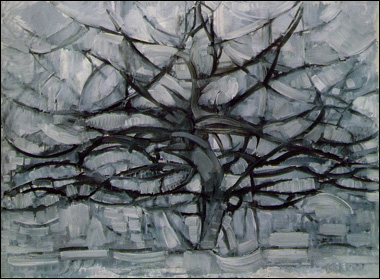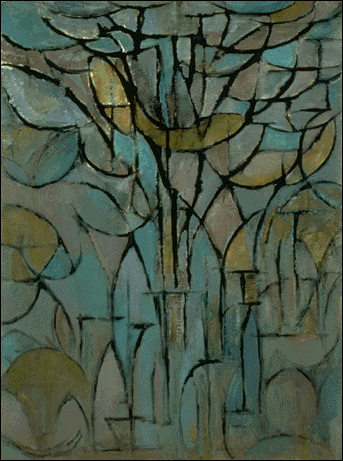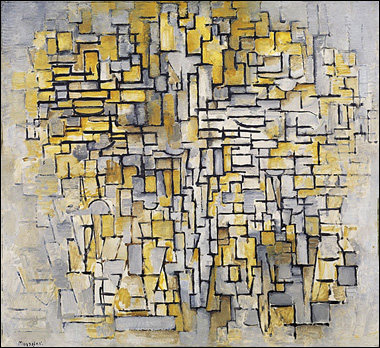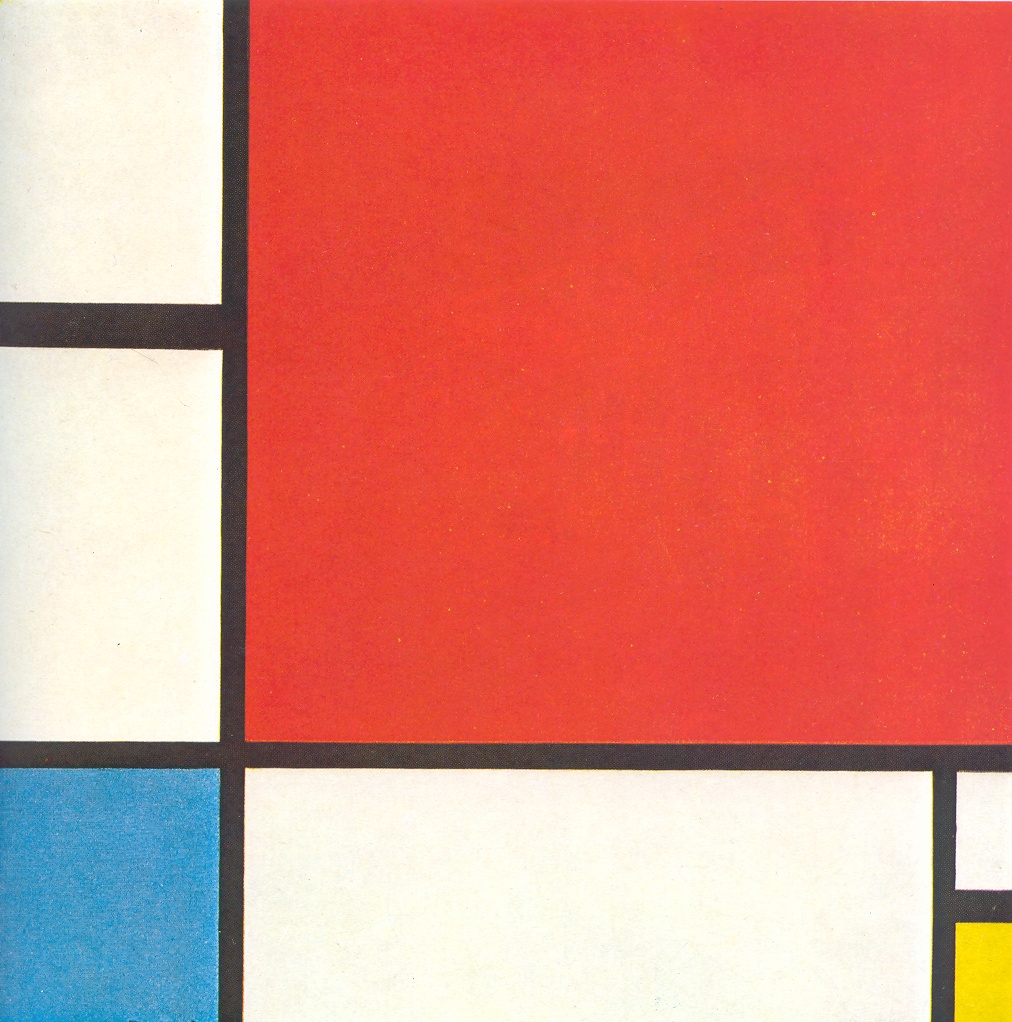Piet Mondrian was a Dutch painter who was born on March 7, 1872 but died on February 1, 1994. Mondrian is said to have been a major contributor towards the art movement De Stijl. He took a non-representational form and evolved it, he then named it Neoplasticism which is another name for De Stijl. This consisted of a white background, which he then painted a grid of vertical and horizontal black lines and the three primary colours.
 After World War I, Mondrian embraced the art of pure abstraction which whilst in doing so he created grid-based paintings. Over his years of trying to find his own style, his work evidently evolved. Within his early grid-based paintings, the lines which represented the separation lines or border are thin and grey. The lines also had a tendency to fade as they got towards the edge of the painting. the rectangles are also smaller and are larger in quantity, these rectangles are either primary colours, black or grey, next to all of the rectangles were coloured whilst only a few were left white.
After World War I, Mondrian embraced the art of pure abstraction which whilst in doing so he created grid-based paintings. Over his years of trying to find his own style, his work evidently evolved. Within his early grid-based paintings, the lines which represented the separation lines or border are thin and grey. The lines also had a tendency to fade as they got towards the edge of the painting. the rectangles are also smaller and are larger in quantity, these rectangles are either primary colours, black or grey, next to all of the rectangles were coloured whilst only a few were left white.Later on into Mondrian s career, we see evidence of the evolution of his style and maturing of his painting as we see that the lines have gotten thicker, the rectangles are now fewer in quantity, and more of the rectangles are left white. Further into the years, Mondrian starts to use fewer coloured rectangles and started to favour the use of white rectangles.
Mondrian is set to have used unexpected methods which would not be able to have been seen or else close observation is to be taken place. His grid-based paintings appear to have perfectly flat planes of colour which wasn't the case as it has been found out that he used subtle brush strokes throughout. The rectangles that have been painted using the primary colours have brush strokes all going in one direction, the black lines contain the least amount of depth, and the white rectangles were painted in layers which were painted using brush strokes which went in different directions.
 Mondrian started to experiment as he started to use more lines which were arranged in an overlapping arrangement. His experimental faze as later on he then decided to use thick, coloured lines instead of using black lines. It seemed as though he embraced the art form as this is evident in his later work such as later he carried on to create pieces such as 'Composition' and ' Place de le Concorde'.
Mondrian started to experiment as he started to use more lines which were arranged in an overlapping arrangement. His experimental faze as later on he then decided to use thick, coloured lines instead of using black lines. It seemed as though he embraced the art form as this is evident in his later work such as later he carried on to create pieces such as 'Composition' and ' Place de le Concorde'. Mondrian started to show evidence of a new expression within his work as he started to place his canvas in a different position. Mondrian's painting called 'Broadway Boogie-Woogie is said to have been a major influence towards abstract geometric painting. Mondrian the went ahead to create a piece called 'Victory Boogie Woogie' which is said to have been more revolutionary than evolutionary. The Victory Boogie Woogie is also said to have been the most profound development within his work.
Mondrian's 'tree' abstract art development:
redtreebypietmondrian.jpg)



Obviously Mondrian didn't start off painting squares, I started off talking about his development and evolution within his famous De Stijl paintings due to the fact that he was most famous for that, Mondrian grew up within a period where Impressionism and Post-impressionism were flourishing so his early works displayed clearly some characteristics of these styles. As Mondrian continued to paint, his later works showed signs of incorporating other artists' styles within his work such as Braque and Picasso.
Within Mondrian's exploration of nature, we can see clearly within the images above that Mondrian developed his style by simplifying and abstracting the forms he saw. Whilst Cubism began to become more popular, we see that Mondrian tries to adapt this art form within his art work as this allowed him to break down the objects he saw in front of him into their most basic forms as he translated them onto his canvas. Within the second picture above which displays one of his abstract tree paintings, we can see that he has started to create black outlines which create faint rectangles at the bottom of the painting. Within the third image you can see that his interest in dark outlines and geometric shapes has started to form. Further development within Mondrian's search for his own style within the fourth image as we clearly see the presence of more vertical and horizontal lines, diagonal and curve lines are sometimes seen but hardly used. Within the fourth picture we see that Mondrian's style of abstraction was on such a different level that we can now say that he has more or less departed from that style. Mondrian moved from abstract to painting his grid-based pieces which made him so well due to the fact that he was the only artist that in a way found the purest form of abstract art which was what he was searching for.


No comments:
Post a Comment